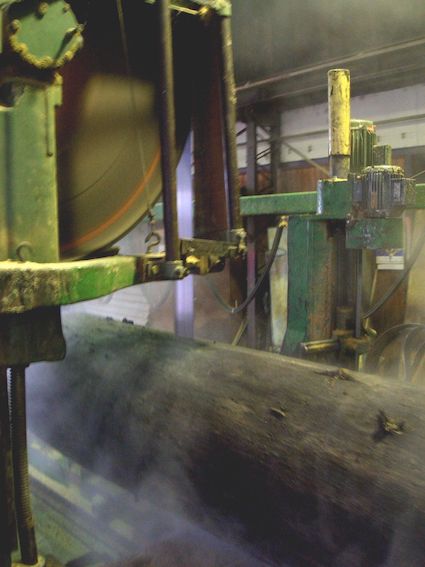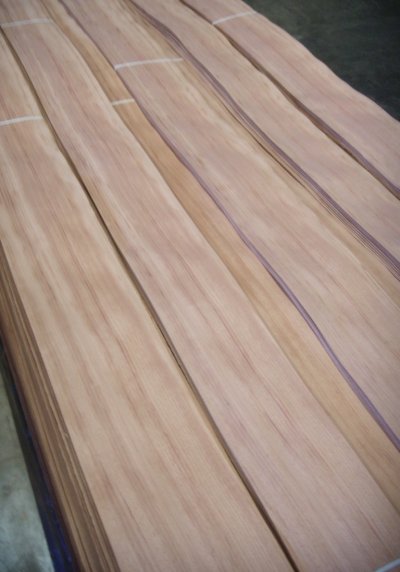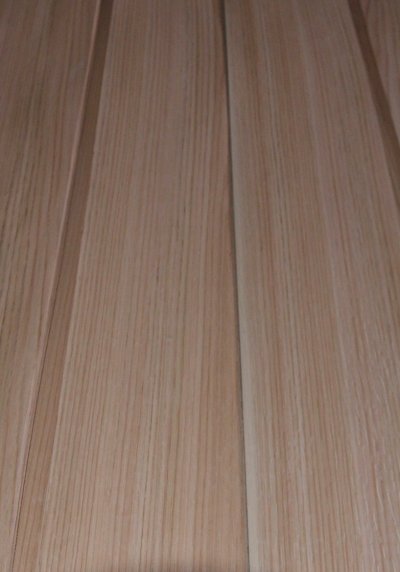


We supply veneers in a number of different cuts such as:
The cutting process chosen affects the decorative grain pattern which is visible in the finished product.

First, a log is cut in half across its length.
Each half is then taken and and sliced straight across, parallel to a line through the centre of the log and at a tangent to the growth rings.
This results in a veneer where the central grain forms irregular elipical rings known as cathedrals. Crown cutting - also known as flat cutting - is generally the most inexpensive type of cutting.
Produces central grain with irregular elipical rings

As the name suggests, a log is sliced into quarters. These cuts take place along the full length of the log to create four 'flitches'.
After that, each quarter is straight sliced at right angles to the growth rings. This produces a veneer with a mostly uniform linear vertical grain.
Produces a mostly uniform linear vertical grain

With a rotary cut, the entire log is peeled of its outer layer. The process involves rotating the log on a central axis while shaving it.
Rotary cut veneers display a broad grain pattern.
Produces a broad grain pattern

Perhaps the most expensive cut of veneer, in a rift cut the wood is sliced at a 15 degree angle to the radius of the log. This process produces veneer with a straight, striped grain.
White and red oaks are most likely to be rift cut in order to avoid the flaky appearance which would result from crown or quarter cutting.
Produces a straight, striped grain